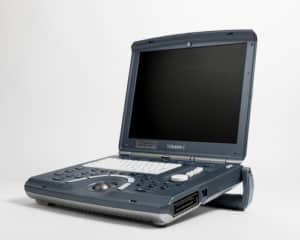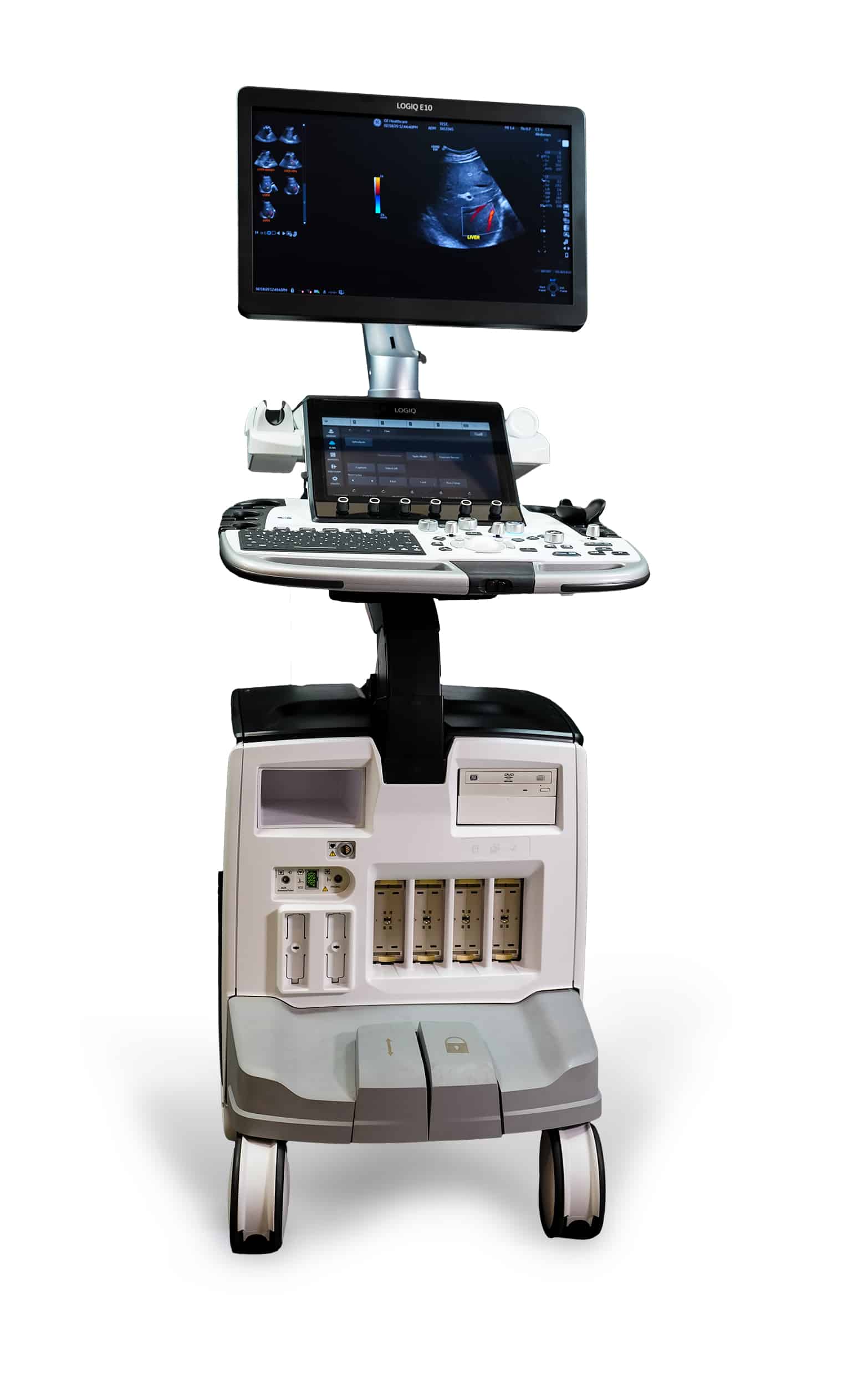View any of the categories to see the top 2-4 recommended 4D ultrasound machines in that category. All machines in a category will have similar minimum features. The price range in a category will generally but not always be similar. Price fluctuates by the brand recognition of an ultrasound machine (well known brands carry a higher price) as well as the condition of the system. (Brand new machines have higher prices than refurbished or used 3D ultrasound machines.)
Finding the Best 3D / 4D ultrasound machine
Often the best value in a category will be a refurbished ultrasound system from a well-known brand. The feature set is the same as other competing machines in the category but the price is much lower. If you know what category you’re looking for choose one below and click to see what 4D ultrasound machines are recommended in that feature range:
3D / 4D ultrasound machine categories
Premium
High-end
Midrange
Economy
Portable
The best premium 3D / 4D ultrasound machines:
Premium 4D ultrasound machines are meant to showcase the latest technologies and provide the absolute best image quality for even difficult patients along with the full spectrum of every available function. Medical professionals, especially those in clinical environments who require the very best where price is not an obstacles will want to choose machines in this segment.
GE has been the leader in 3D / 4D ultrasound ever since it purchased the Voluson line of ultrasound machines from Medison. Samsung has since purchased Medison and continues to follow GE in second place in providing the best 4D image quality.
The Voluson E10 is the newest version of the Voluson line and slightly surpasses the excellent GE Voluson E8, the undisputed leader for nearly a decade. Both are at the top in terms of image quality, features and available transducers. The Samsung UGEO WS80 is an excellent improvement on the Accuvix A30 that was already a very good 3D/4D system. If you can’t afford GE 4D then Samsung 4D offers a compelling second choice at a lower price point.
Probo Medical recommends the GE Voluson E10 if you must have the absolute cutting edge and don’t mind paying the highest price. The GE Voluson E8 is recommended for those who want the great quality, but also want to save money over the new E10. The Voluson E8 delivers the best price for performance in the premium category as a late model refurbished or demo system. Probo Medical recommends the Samsung UGEO WS80 for those who want premium level performance at only a high-end price.
What to expect in the premium 3D / 4D ultrasound category
- Amazing 2D and 3D/4D images with the greatest penetration available
- Provides amazing performance in even the early stages of fetal development
- Advanced visualization technology
- Amazing efficiency of workflow with the latest automation tools
- High volumetric resolution with fast volume rates and better handling of artifacts
- Ultra fast data transfer rates and Amazing processing power
- Matrix 4D transducers
- A large range of mechanical 4D transducers for different types of applications
- Advanced Fetal Echo diagnosis
- High resolution 4D imaging (called HD Live or FRV)
- Automation that improves productivity in OB applications
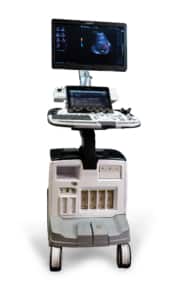
The best high-end 3D / 4D ultrasound machines:
The high-end 4D ultrasound machine category offers similar performance to the premium 3D segment, but keeps costs lower by not needing to include every premium feature. Thus a premium 3D ultrasound machine and a high-end 3D ultrasound machine will look very similar but the loss of those few features will significantly lower the price. Medical professionals who want the best performance but don’t want to pay the highest price should consider the high-end segment.
GE has produced the leading 4D ultrasound machines ever since it purchased the Voluson line from Medison over a decade ago. Samsung has now purchased Medison and continues to try and catch up to GE in providing the best 4D image quality. Because both brands have started from a similar 3D technology, both have maintained a lead over the other brands. GE will be difficult to overtake but Samsung now has the resources that Medison did not and is attempting to close the gap. This competition will provide a great value for customers whether they buy GE or Samsung for their 4D ultrasound machine.
The GE Voluson E6 was launched as a scaled-back version of the Voluson E8 and looks exactly like the E8 from the outside except for the name. The differences are the software and features offered on the E6 are less powerful. However the two ultrasound machines are very similar in performance. The Voluson S8 is a newer platform developed after the Voluson E8 and based upon a different set of probes. The S8 is similar to the E6 in performance, but is a smaller, lighter form factor.
What to expect in the high-end 3D / 4D ultrasound category:
- Similar 2D & 4D image quality against the best grade of systems
- Providing innovative ergonomics with touchscreen and bigger LED monitor, more than 19”.
- High volumetric resolution with fast volume rates
- Automated handling of artifacts and automated image optimization
- Provide full confidence with suppling outstanding fetal images for daily practice from the early pregnant stage
- Pretty 3/4D photos for maternal bonding
- HD Live(FRV) with acceptable quality
- Elastography for gynecology and breast
- Automated measurement function to improve productivity in OB
- Flexible report system
- Smart exam or scan assistant
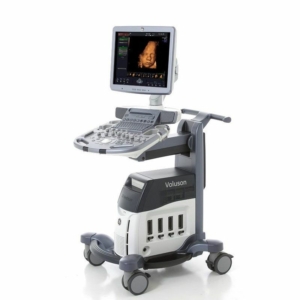
The best midrange 3D / 4D ultrasound machines:
3D ultrasound machines in the mid-range segment are meant to evenly balance price with performance for medical professionals that need to do a large volume of basic exams with the option of being able to perform a few high-end functions. The midrange is the most commonly purchased price category. 4D ultrasound systems in this segment should fit the needs of most medical professionals and usually provide the most balance of performance in relation to the price.
GE remains the leader in 3D ultrasound machines and continues to provide the highest performance for each category, including the midrange. GE covers this segment with the Voluson product line, which it originally purchased from Medison over a decade ago. Medison which is now Samsung Medison continues to develop on the same 4D technology and is trying to close the performance gap with GE by copying GE feature improvements and adding some new ones of it’s own as well as offering a lower price-point for the same features. Samsung has shown it’s willingness to be competitive with frequent updates of the Medison line of 4D ultrasound machines which has made it harder for doctors to get to know a particular model before it is superseded by a newer one, but which is also bringing down the overall cost of 3D ultrasound machines in this segment. Philips also recently developed a 4D specific version of it’s ClearVue product line to better serve the midrange 4D ultrasound machine market. Philips may not have the same 4D image quality as GE and Samsung, but it has a very smooth workflow and like most Philips machines is excellent in shared service environments where 4D OB is not the only application.
The GE Voluson S6 is a newer platform than the older Voluson E8 or the extremely popular but now outdated Voluson 730 pro that it replaced. The Voluson S6 looks nearly identical to the more powerful Voluson S8 and shares the same probes with it. Anyone who is looking to replace a Voluson 730 will find the S6 is smaller and lighter with a bigger screen and similar image quality. The Samsung UGEO H60 replaces the SonoAce X8 and Accuvix V10/V20. Anyone familiar with those systems will find the H60 a sleeker, faster replacement with much better 4D image quality. The H60 offers very affordable pricing for the image quality and features it offers. The Philips ClearVue 650 is identical to the ClearVue 550 but it also offers a 4D convex probe. The ClearVue 650 is a replacement to the HD7xe but it is also a brand new unit as the HD7xe never offered 4D. Workflow is efficient, and the ClearVue 650 is a true shared service unit that also offers good cardiac and vascular imaging and features.
What to expect in the midrange 3D / 4D ultrasound category:
- Basic rather than advanced 4D features to balance cost & performance
- 2D and 3/4D image quality are good
- The segment with the most competitive price to performance
- Must be flexible, easy to use, fast and reliable
- Image automation and measurement automation speed exam efficiency
- Typical choice of one to three 4D transducers
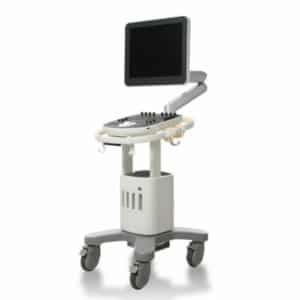
The best economy 3D / 4D ultrasound systems:
Economy 4D ultrasound machines are meant to do basic 3D scans as well as basic general imaging at the lowest price possible. Probe choices (if they exist) are very limited. Almost all non-essential features are removed and hardware is shrunk to lower costs. However as newer brands have been moving into this segment more than any other the top brands have had to keep a few mid-range features to keep an edge. This together with pressure from these new brands has brought 4D into the reach of millions of doctors and clinics that before could not afford it and the image quality and features of today’s economy segment are far better and less expensive than those of only 5 years ago. In other words, it’s a great time to add a 4D ultrasound machine to your practice!
What to expect in the economy 3D / 4D ultrasound category:
- Basic 4D features
- Very limited automation features
- Limited selection of probes
- Targeted to private practices and specialized clinics
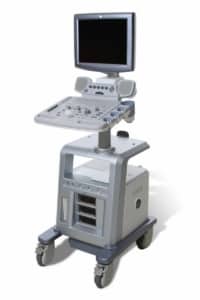
The best portable 3D / 4D ultrasound systems
Portable 4D ultrasound machines range in price and features from the high-end category to the economy segment and are meant for point-of-care, and multi-location usage. However as the power of portables now is very close to console units of the same segment, many medical professionals are choosing them over consoles because they are easy to move around, keep secure, and send out for service. The biggest downside of a portable is that it typically has only one active probe port unless a multi-probe connector cart is available. Portable 3D ultrasound machines have become especially popular in the 4D segment as the price is typically lower than a competing economy or midrange console with similar features and they fit well in smaller examination rooms.
GE has been the leader in the 3D ultrasound machine market ever since it purchased the Voluson product from Medison over a decade ago. GE has developed and marketed this name till many patients even ask for it. There is no doubt that GE has had the best portable 4D ultrasound machines for many years however Samsung which purchased Medison a few years ago acquired similar technology and is slowly closing the gap with GE. Samsung offers excellent monitors, updated designs and a tremendous R&D department that will continue to innovate as well as follow GE’s lead. This competition means great values for buyers in this segment.
The GE Voluson-i is the first portable Voluson and it has many variations like the Voluson-e (a feature stripped version of the Voluson-I meant for a lower price point) and the Voluson-q, a more advanced quantitative version. However the Voluson-I offers imaging similar to the extremely popular Voluson 730 but with updated software and a bigger, clearer monitor. Those who are familiar with the Voluson 730 and want to replace it will find the Voluson-I a worthy successor and a great value. The Voluson-I has excellent image quality and the widest array of 4D probe choices in the portable segment. The Samsung UGEO HM70A is the successor to the Medison U5 and U6 and is improved in every way. It offers a lower cost option to the Voluson-I and a broader set of potential applications as it can also provide full cardiac features.
What to expect in the portable 3D / 4D ultrasound category:
- Although compact, they can provide high-end ultrasound imaging
- Excellent image quality for 3/4D with innovative volume technology
- 15” monitors
- Laptop shape
- One active probe port
